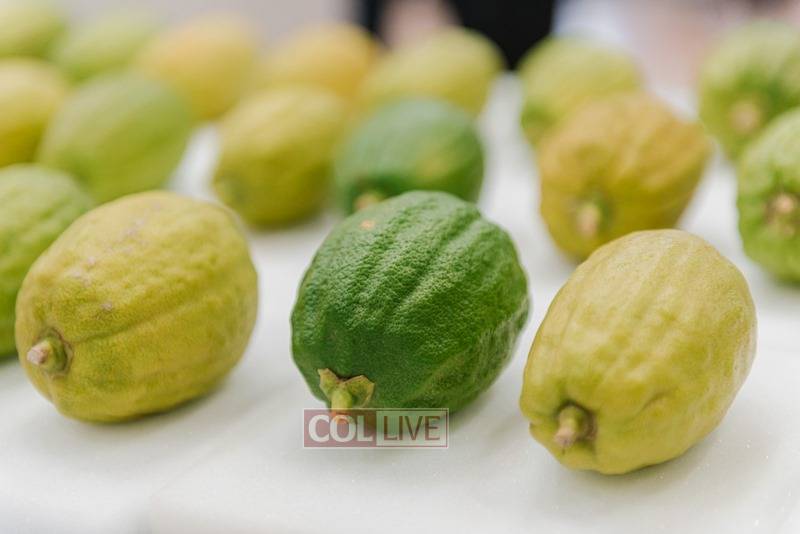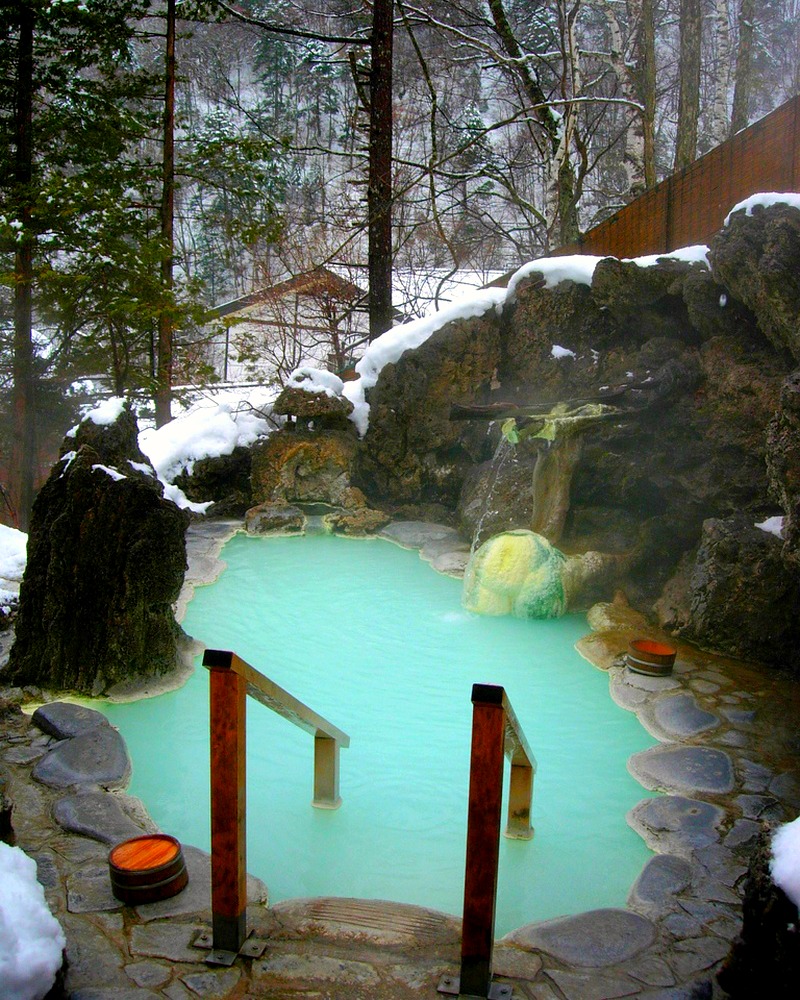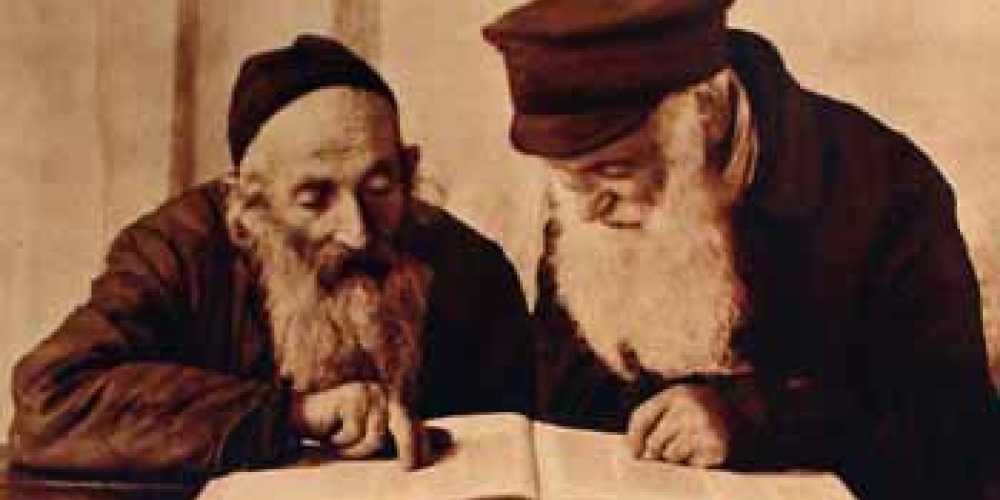BSD
Suka 31b
Teves 17, 5782. December 21, 2021
1- We added a few more details concerning the color ירוק ככרתי.
The Gemara in Megillah 13 a, states that Esther was a ירקרוקת.
ר’ יהושע בן קרחה אומר אסתר ירקרוקת היתה, וחוט של חסד משוך עליה.
Esther was called Hadassah because she was greenish, having a pale complexion like a myrtle, הדסה, but a cord of Divine grace was strung around her, endowing her with a beautiful appearance.
The connotation is that the color detracted from her natural beauty. What does that mean?

2- The bottom line, as Tosfos concludes, is that a green Esrog may be used as long as we know that eventually it will turn yellow.
Otherwise, if it stays green, it would mean that it was never fully matured when picked. It never was an Esrog per se.

3- We spoke aboke the size of an Esrog. The minimal and maximum size.

4- Using a Lulav that is עבודה זרה. A lulav that was worshiped should not be used for the Mitzvah. However בדיעבד one is יוצא.
We touched upon the big topic of איסורי הנאה. Items that we are prohibited (either מדאורייתא like חמץ, or מדרבנן like non-kosher wine) to have use from- הנאה.
So why is one יוצא with Lulav of עבודה זרה? Isn’t he ‘enjoying’ this prohibited Lulav?
Now, מצוות לאו ליהנות ניתנו. That is a general rule, that when performing a Mitzvah, if during the Mitzvah one has any form of enjoyment or pleasure, we do not consider that pleasure as ‘real’. We discount it and do not give it credence.
As Rashi explains here and in RH 28a, Mitzvos need to be performed only ‘as a servant to his master’. Thus, the enjoyment is not taken into account.
לא ליהנות ניתנו – לישראל להיות קיומם להם הנאה אלא לעול על צואריהם ניתנו
The result of this rule is that if one performs a Mitzvah with items that are אסור בהנאה, such as using a mikvah that has water that is prohibited from using, the טבילה is fine although the person enjoyed soaking in the hot or cold water in the mikvah.

Therefore, when using a Lulav that is prohibited to have הנאה from, one is יוצא. The fact that he ‘enjoyed’ its use by fulfilling his מצוה obligation, we do not considered that ‘enjoyment’. The spiritual benefit of doing a mitzvah does not count as a הנאה.
To be continued.
5- In connection with מצוות לאו ליהנות ניתנו we mentioned a fascinating and fundamental concept from the אגלי טל. This popular work on the halachos of Shabbos was written by Reb Avrohom Borenstein, the Rebbe of Sochotchov.
What he writes in the הקדמה is interesting in general and in particular to see it coming from someone that was a Chassidisher Rebbe.
Here is the Hebrew.
In short he writes that contrary to popular opinion (did he mean in the Chasidisher world?) learning Torah and enjoying the intellectual challenge is not only something to be frowned about, but on the contrary, that is תורה לשמה!!!

‘The primary idea of לימוד התורה is (also) to enjoy its logic because only when one gains pleasure from being involved in learning and understanding it does the תורה unite with him.’
ומדי דברי זכור אזכור מה ששמעתי קצת בני אדם טועין מדרך השכל בענין לימוד תוה”ק ואמרו כי הלומד ומחדש חדושיס ושמח ומתענג בלימודו אין זה לימוד התודה כ”כ לשמה כמו אם היה לומד בפשיטות שאין לו מהלימוד שום תענוג והוא רק לשם מצוה אבל הלומד ומתענג בלימודו הרי מתערב בלימודו גם הנאת עצמו
ובאמת זה טעות מפורסם ואדרבא כי זה היא עיקר מצות לימוד התורה להיות שש ושמח ומתענג בלימודו ואז דברי תורה נבלעין בדמו ומאחר שנהנה מדברי תורה הוא נעשה דבוק לתורה [ועיין פירש”י סנהדרין נ”ח ד”ה ודבק]
ובזוה”ק דבין יצה”ט ובין יצה”ר אינן מתגדלין אלא מתוך שמחה יצה”ט מתגדל מתוך שמחה של תורה יצה”ר כו’ ואם אמדת שע”י השמחה שיש לו מהלימוד נקרא שלא לשמה או עכ”פ לשמה ושלא לשמה, הרי שמחה זו עוד מגרע כח המצוה ומכהה אודה ואיך יגדל מזה יצה”ט וכיון שיצה”ט מתגדל מזה בודאי זה הוא עיקר המצוה.
ומודינא דהלומד לא לשם מצות הלימוד רק מחמת שיש לו תענוג בלימודו הרי זה נקרא לימוד שלא לשמה כהא דאוכל מצה שלא לשם מצוה רק לשם תענוג אכילה ובהא אמרו לעולם יעסוק אדם כו’ שלא לשמה שמתוך כו’ אבל הלומד לשם מצוה ומתענג בלימודו הרי זה לימוד לשמה וכולו קודש כי גם התענוג מצוה
6- We read the text of the words of Reb Avrohom min Hohor. Montpellier, France.
(We mentioned R’ Chaim Moshe Yehuda Blau who tirelessly worked to have this and other works of Rishonim published).

Rabbi Moshe Yehuda Hakohen Blau
נדרים מח, א.
The Mishna says that one who takes a vow not to have any הנאה from a particular town, he is not allowed to use the city’s plaza, bath house, the Shul, the בימה and the ספרים.
The obvious question is regarding the ספרים. When one uses them to learn, even if he derives pleasure from them, we should discount it since מצוות לאו ליהנות ניתנו!
Reb Avrohom answers that generally מצוות לאו ליהנות ניתנו means that when a Mitzvah is performed the intention is not for the pleasure derived from it.

Learning Torah on the other hand, the enjoyment is part of the Mitzvah!
Therefore, the vow not to have any הנאה from a particular city includes using and learning from their ספרים since learning encompasses intellectual pleasure.